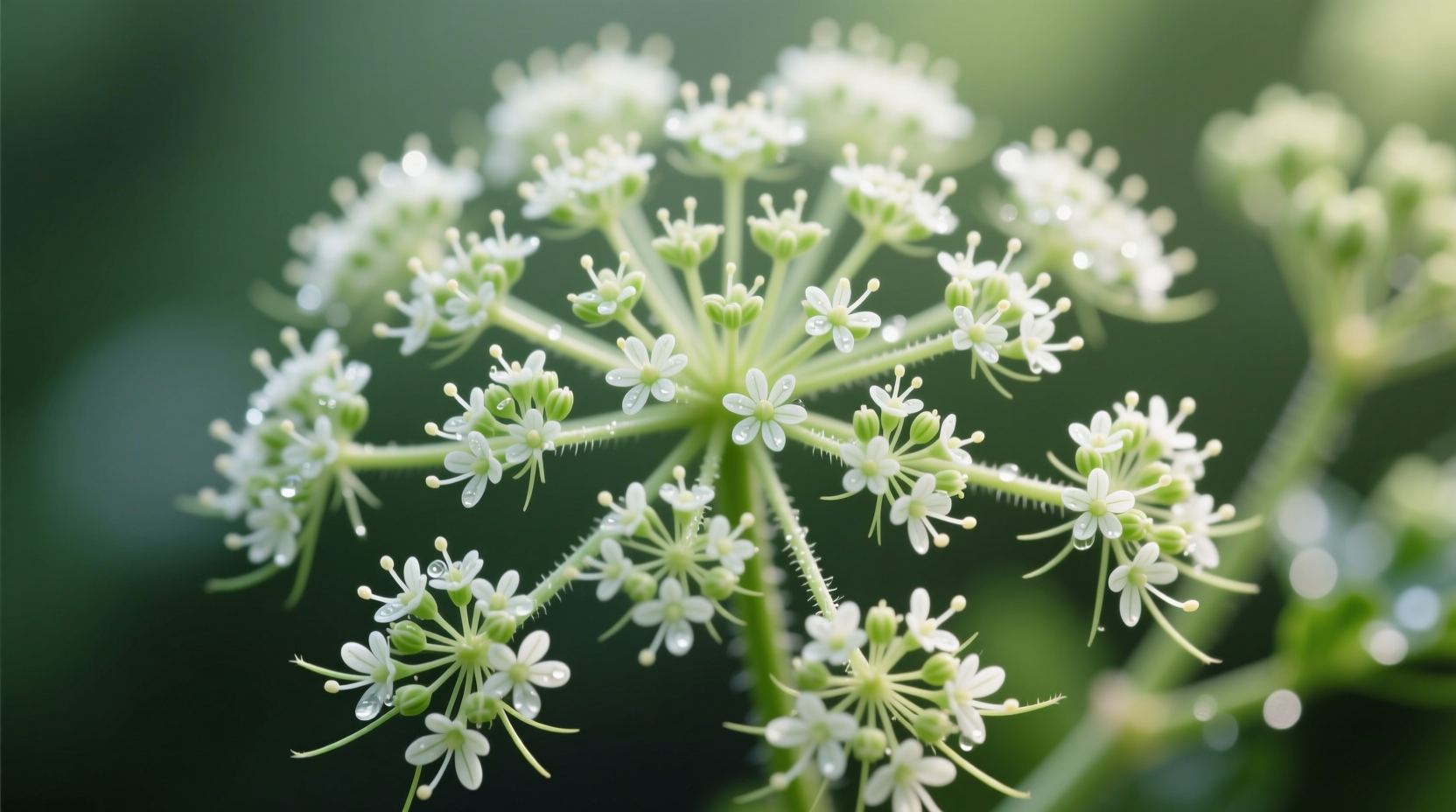Why Understanding the Parsley Family Matters for Gardeners and Cooks
Whether you're growing herbs in your kitchen garden or foraging wild plants, recognizing members of the Apiaceae family could literally be a matter of life and death. This comprehensive guide delivers the botanical knowledge you need to safely identify, cultivate, and utilize plants from this diverse family while avoiding potentially fatal mistakes.
Key Characteristics That Define the Apiaceae Family
All members of the parsley family share distinctive botanical features that make identification possible with careful observation. The most recognizable trait is their umbel flower structure—small flowers arranged in umbrella-like clusters. When crushed, most Apiaceae plants release aromatic compounds that give them their characteristic scents, though these range from pleasant (like parsley) to foul (like hemlock).
Other identifying features include:
- Hollow stems, often with distinctive grooves
- Leaves with sheathing bases that wrap around the stem
- Compound leaves with finely divided leaflets
- Seeds with prominent ridges containing essential oils

Common Culinary Members of the Parsley Family
The Apiaceae family provides some of the world's most essential culinary herbs and vegetables. Understanding their flavor profiles and best uses can transform your cooking:
| Plant | Flavor Profile | Best Culinary Uses | Substitution Ratio |
|---|---|---|---|
| Parsley (Petroselinum crispum) | Fresh, slightly peppery, grassy | Garnishes, tabbouleh, chimichurri, stocks | 1:1 for flat-leaf varieties |
| Cilantro/Coriander (Coriandrum sativum) | Citrusy, soapy (to some), pungent | Salsas, curries, chutneys, Asian cuisine | Use ⅔ cup culantro for 1 cup cilantro |
| Dill (Anethum graveolens) | Grassy, anise-like, slightly sweet | Pickling, fish dishes, tzatziki, potato salad | Fennel fronds work as 1:1 substitute |
| Fennel (Foeniculum vulgare) | Sweet anise/licorice flavor | Roasted bulbs, salads, seafood, sausages | Anise seeds at ¼ tsp per bulb |
Historical Journey: How Apiaceae Plants Shaped Human Civilization
The relationship between humans and Apiaceae plants spans millennia, with archaeological evidence showing parsley's use in ancient Greek funeral rites as early as 1500 BCE. According to research from the Royal Botanic Gardens, Kew, many Apiaceae species were among the first plants domesticated for culinary and medicinal purposes.
Key historical milestones include:
- 3000 BCE: Caraway seeds found in Swiss lake dwellings indicate early European use
- 5th century BCE: Hippocrates documents medicinal uses of parsley for digestive issues
- Roman era: Cilantro spreads across trade routes from the Mediterranean to Asia
- 16th century: European colonists introduce dill to North America
- 19th century: Scientific classification of the family as Umbelliferae (later Apiaceae)
Critical Safety Considerations: Deadly Look-alikes in the Apiaceae Family
One of the most crucial aspects of understanding the parsley family is recognizing potentially fatal look-alikes. The Apiaceae family contains both culinary treasures and deadly poisons that often grow in similar habitats. According to the Centers for Disease Control and Prevention, accidental poisonings from misidentified Apiaceae plants continue to occur annually.
Essential safety guidelines:
- Never forage Apiaceae plants without multiple identifying characteristics—rely on more than just leaf shape
- Always check for the distinctive smell—culinary varieties have pleasant aromas while poison hemlock smells like mice urine
- Examine stem patterns—poison hemlock has distinctive purple blotches on smooth stems
- When in doubt, leave it out—if you cannot 100% confirm the plant's identity, do not consume it
Optimal Growing Conditions for Apiaceae Family Plants
Successfully cultivating plants from the parsley family requires understanding their shared growing requirements while respecting species-specific needs. Most Apiaceae members prefer:
- Well-drained soil with moderate fertility (rich soil produces more foliage but less flavor)
- Full sun to partial shade depending on climate (6+ hours of direct sun)
- Consistent moisture without waterlogging (most dislike "wet feet")
- Cooler temperatures for optimal flavor development (heat causes bolting)
Pro tip: Plant cilantro and dill early in the season as they bolt quickly in summer heat, while parsley and celery tolerate slightly warmer conditions. Successive plantings every 3-4 weeks ensure continuous harvest.
Maximizing Flavor: Culinary Techniques for Apiaceae Herbs
The volatile oils that give Apiaceae plants their distinctive flavors are delicate and require proper handling to maximize their culinary impact:
- Add delicate herbs late—parsley, cilantro, and dill lose flavor when cooked too long; stir in during the last 5-10 minutes
- Use stems for flavor bases—finely chop parsley and cilantro stems for mirepoix or sofrito
- Preserve through freezing—Apiaceae herbs don't dry well; freeze in oil or water for best flavor retention
- Pair with fats—the essential oils in these herbs are fat-soluble, so pair with olive oil, butter, or yogurt
Common Questions About the Parsley Family
Understanding these frequently asked questions helps clarify common misconceptions about Apiaceae plants:











 浙公网安备
33010002000092号
浙公网安备
33010002000092号 浙B2-20120091-4
浙B2-20120091-4